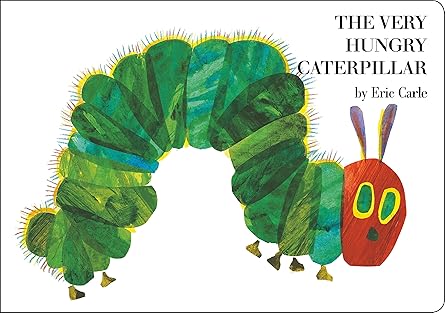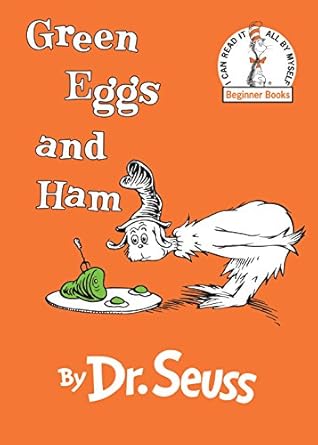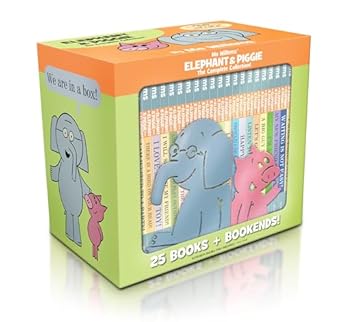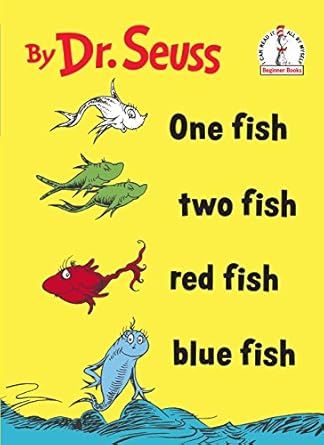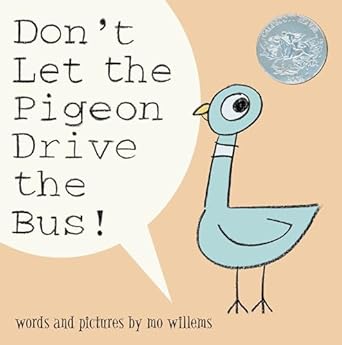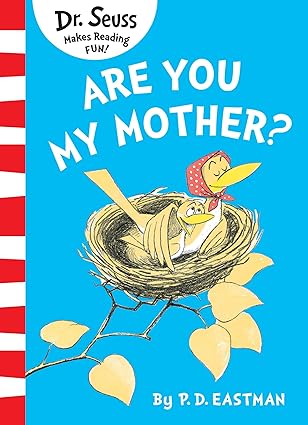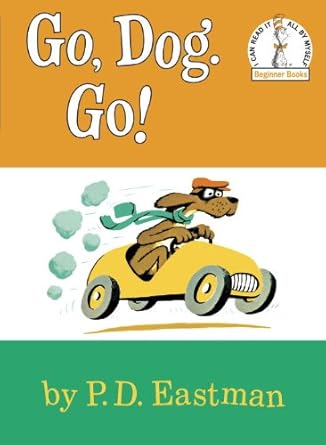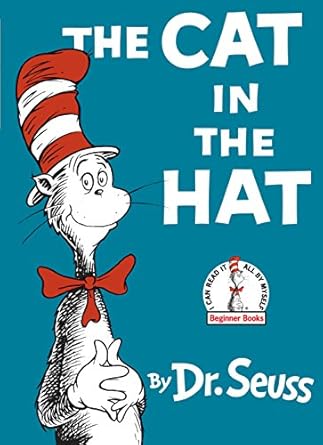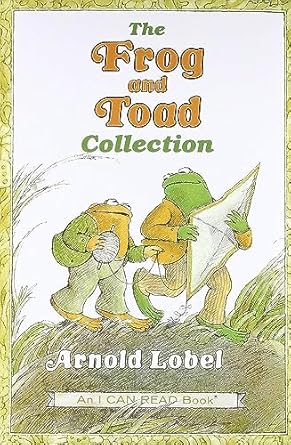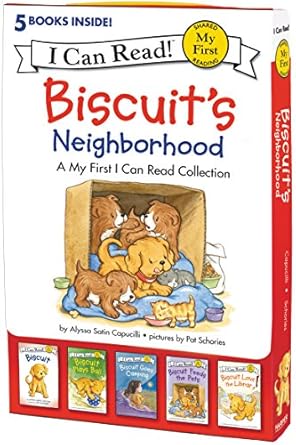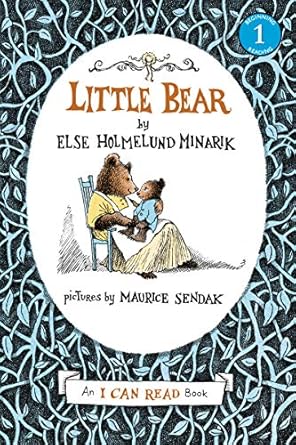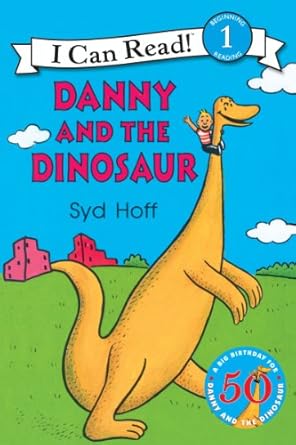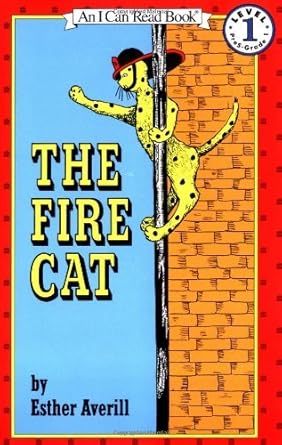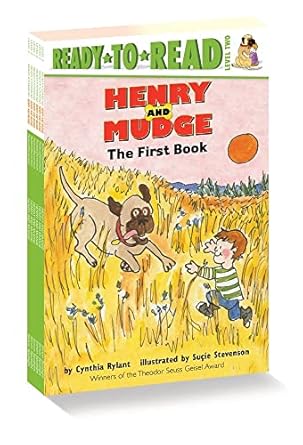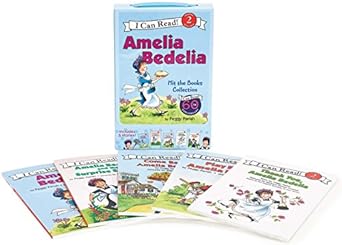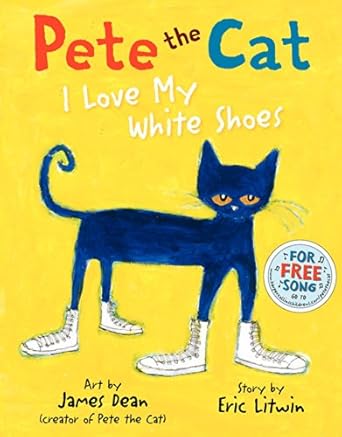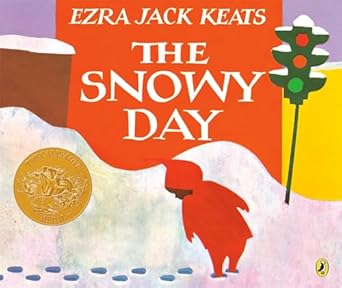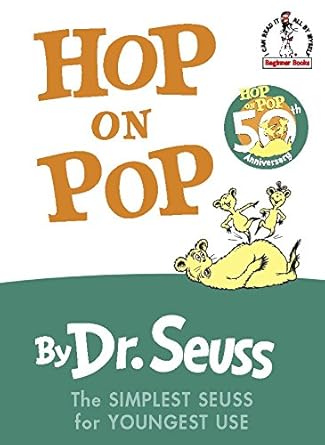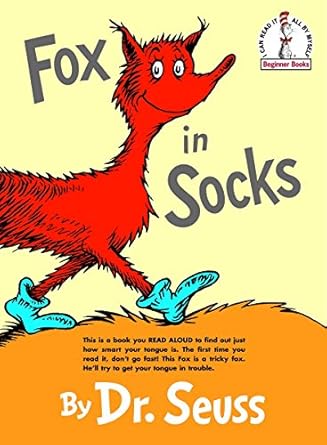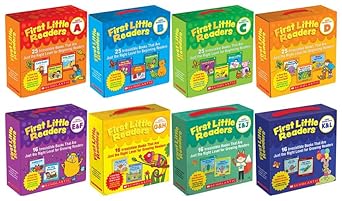Summary: In today's article, I have handpicked 20 of the best books for beginning readers, from timeless classics to modern favorites. Here are my top 3 picks:
- The Very Hungry Caterpillar by Eric Carle
- Green Eggs and Ham by Dr. Seuss
- Elephant & Piggie Series by Mo Willems
Books for beginning readers build confidence, improve literacy, and make learning fun. With simple words and engaging stories, they spark imagination and curiosity. Early reading helps kids explore new ideas and develop a lifelong love for books!
TOP 20: Best Books for Beginning Readers
- The Very Hungry Caterpillar by Eric Carle
- Green Eggs and Ham by Dr. Seuss
- Elephant & Piggie Series by Mo Willems
- One Fish Two Fish Red Fish Blue Fish by Dr. Seuss
- Don't Let the Pigeon Drive the Bus! by Mo Willems
- Are You My Mother? by P.D. Eastman
- Go, Dog. Go! by P.D. Eastman
- The Cat in the Hat by Dr. Seuss
- Frog and Toad Series by Arnold Lobel
- Biscuit Series by Alyssa Satin Capucilli
- Little Bear Series by Else Holmelund Minarik
- Danny and the Dinosaur by Syd Hoff
- The Fire Cat by Esther Averill
- Henry and Mudge Series by Cynthia Rylant
- Amelia Bedelia Series by Peggy Parish
- Pete the Cat: I Love My White Shoes by James Dean & Eric Litwin
- The Snowy Day by Ezra Jack Keats
- Hop on Pop by Dr. Seuss
- Fox in Socks by Dr. Seuss
- First Little Readers Parent Pack: Guided Reading Level A by Scholastic
1. The Very Hungry Caterpillar
- Author: Eric Carle
- About: A caterpillar eats through various foods before transforming into a butterfly.
- Style of writing: Simple, repetitive text with vivid illustrations.
- Length: Approximately 224 words.
- Year written: 1969
- Emotional impact: Leaves a lasting impression with its engaging visuals and transformative storyline.
- Difficulty level: Easy
- Why read it: Introduces basic concepts like counting and days of the week, fostering curiosity.
2. Green Eggs and Ham
- Author: Dr. Seuss
- About: Sam-I-Am persuades another character to try green eggs and ham.
- Style of writing: Rhyming, repetitive text with imaginative scenarios.
- Length: Approximately 700 words.
- Year written: 1960
- Emotional impact: Encourages openness to new experiences in a fun, memorable way.
- Difficulty level: Easy
- Why read it: Enhances phonetic awareness and promotes trying new things.
3. Elephant & Piggie Series
- Author: Mo Willems
- About: Chronicles the adventures of best friends Elephant (Gerald) and Piggie.
- Style of writing: Conversational text with expressive illustrations.
- Length: Each book ranges from 50-200 words.
- Year written: 2007–2016
- Emotional impact: Highlights friendship dynamics, leaving readers with warmth and laughter.
- Difficulty level: Easy
- Why read it: Teaches social skills and the nuances of friendship through humor.
4. One Fish Two Fish Red Fish Blue Fish
- Author: Dr. Seuss
- About: A whimsical exploration of various creatures and scenarios.
- Style of writing: Rhyming, playful text with imaginative illustrations.
- Length: Approximately 1,700 words.
- Year written: 1960
- Emotional impact: Delights readers with its creativity and rhythmic flow.
- Difficulty level: Moderate
- Why read it: Expands vocabulary and stimulates imagination.
5. Don't Let the Pigeon Drive the Bus!
- Author: Mo Willems
- About: A pigeon desperately wants to drive a bus and tries to convince the reader.
- Style of writing: Direct address with humorous dialogue.
- Length: Approximately 200 words.
- Year written: 2003
- Emotional impact: Engages readers through interactive storytelling and humor.
- Difficulty level: Easy
- Why read it: Encourages decision-making and understanding of boundaries.
6. Are You My Mother?
- Author: P.D. Eastman
- About: A hatchling searches for his mother, asking various animals along the way.
- Style of writing: Simple, repetitive text with a quest narrative.
- Length: Approximately 1,200 words.
- Year written: 1960
- Emotional impact: Evokes empathy and the comfort of familial bonds.
- Difficulty level: Easy
- Why read it: Teaches identification and the importance of family.
7. Go, Dog. Go!
- Author: P.D. Eastman
- About: Dogs engage in various activities, culminating in a dog party.
- Style of writing: Simple sentences with repetitive structures.
- Length: Approximately 700 words.
- Year written: 1961
- Emotional impact: Entertains with its lively scenarios and illustrations.
- Difficulty level: Easy
- Why read it: Introduces basic concepts like colors, opposites, and prepositions.
8. The Cat in the Hat
- Author: Dr. Seuss
- About: Two children, bored on a rainy day, are visited by the mischievous Cat in the Hat, who brings chaos and fun into their home.
- Style of writing: Rhythmic and rhyming text with playful language.
- Length: Approximately 1,626 words.
- Year written: 1957
- Emotional impact: Engages readers with its lively narrative and whimsical illustrations, leaving a lasting impression of joy and imagination.
- Difficulty level: Moderate; suitable for early readers with some experience.
- Why read it: Encourages creativity and demonstrates the fun of reading through its entertaining storyline.
9. Frog and Toad Series
- Author: Arnold Lobel
- About: Chronicles the enduring friendship and adventures of Frog and Toad.
- Style of writing: Gentle, straightforward prose with subtle humor.
- Length: Each story is approximately 1,000–1,500 words.
- Year written: First book published in 1970
- Emotional impact: Leaves readers with a warm feeling, highlighting the value of friendship and loyalty.
- Difficulty level: Easy to moderate
- Why read it: Teaches moral lessons and showcases the beauty of simple, everyday moments.
10. Biscuit Series
- Author: Alyssa Satin Capucilli
- About: Follows the adventures of a playful puppy named Biscuit.
- Style of writing: Simple, repetitive text ideal for early readers.
- Length: Approximately 200–300 words per book.
- Year written: First book published in 1996
- Emotional impact: Delights young readers with charming stories and endearing illustrations.
- Difficulty level: Easy
- Why read it: Builds reading confidence through repetition and familiar scenarios.
11. Little Bear Series
- Author: Else Holmelund Minarik
- About: Depicts the gentle adventures of Little Bear and his family.
- Style of writing: Warm, simple narratives with a touch of nostalgia.
- Length: Approximately 1,000 words per story.
- Year written: First book published in 1957
- Emotional impact: Conveys a comforting sense of family and home, leaving readers feeling content.
- Difficulty level: Easy
- Why read it: Encourages imagination and reassures young readers with its soothing themes.
12. Danny and the Dinosaur
- Author: Syd Hoff
- About: A boy named Danny befriends a dinosaur, and they embark on a day of fun adventures.
- Style of writing: Simple sentences with engaging illustrations.
- Length: Approximately 1,000 words.
- Year written: 1958
- Emotional impact: Sparks joy and wonder, highlighting the magic of friendship and adventure.
- Difficulty level: Easy
- Why read it: Encourages imagination and demonstrates the fun of unexpected friendships.
13. The Fire Cat
- Author: Esther Averill
- About: Tells the story of Pickles, a stray cat who finds purpose as a firehouse cat.
- Style of writing: Clear, descriptive prose with engaging illustrations.
- Length: Approximately 2,000 words.
- Year written: 1960
- Emotional impact: Inspires readers with themes of redemption and finding one's place in the world.
- Difficulty level: Moderate
- Why read it: Teaches lessons about personal growth and community service.
14. Henry and Mudge Series
- Author: Cynthia Rylant
- About: Chronicles the adventures of a boy named Henry and his large dog, Mudge.
- Style of writing: Heartwarming narratives with relatable themes.
- Length: Approximately 1,200 words per book.
- Year written: First book published in 1987
- Emotional impact: Highlights the bond between a child and his pet, leaving readers with a sense of warmth and companionship.
- Difficulty level: Easy to moderate
- Why read it: Great for young readers, teaches empathy, friendship, and the joy of pets.
15. Amelia Bedelia Series
- Author: Peggy Parish (original series); continued by her nephew, Herman Parish.
- About: Amelia Bedelia, a literal-minded housekeeper, humorously misinterprets her employers' instructions, leading to amusing situations.
- Style of writing: Lighthearted prose with wordplay and idiomatic expressions.
- Length: Each book ranges from approximately 500 to 1,500 words.
- Year written: First book published in 1963.
- Emotional impact: Entertains readers with its comedic scenarios, leaving a lasting impression of joy and laughter.
- Difficulty level: Easy to moderate.
- Why read it: Enhances understanding of language nuances and idioms, while providing delightful humor.
16. Pete the Cat: I Love My White Shoes
- Author: Eric Litwin; illustrated by James Dean.
- About: Pete the Cat strolls in his new white shoes, which change colors as he steps into various substances, yet he maintains a positive attitude.
- Style of writing: Rhythmic and repetitive text with a musical quality.
- Length: Approximately 400 words.
- Year written: 2010.
- Emotional impact: Encourages resilience and optimism, leaving readers with a sense of positivity.
- Difficulty level: Easy.
- Why read it: Teaches color recognition and adaptability through an engaging and musical narrative.
17. The Snowy Day
- Author: Ezra Jack Keats.
- About: Follows a young boy named Peter as he explores his neighborhood after the season's first snowfall.
- Style of writing: Simple, descriptive prose complemented by vivid illustrations.
- Length: Approximately 400 words.
- Year written: 1962.
- Emotional impact: Captures the wonder and innocence of childhood, leaving a lasting impression of joy and curiosity.
- Difficulty level: Easy.
- Why read it: Celebrates diversity and the universal joy of new experiences.
18. Hop on Pop
- Author: Dr. Seuss.
- About: A collection of short, simple rhymes introducing basic phonics concepts.
- Style of writing: Playful rhyming text with repetitive patterns.
- Length: Approximately 400 words.
- Year written: 1963.
- Emotional impact: Engages young readers with its rhythmic and fun approach to language.
- Difficulty level: Easy.
- Why read it: Builds foundational reading skills through entertaining and accessible rhymes.
19. Fox in Socks
- Author: Dr. Seuss.
- About: A series of tongue-twisting rhymes featuring Fox and Knox.
- Style of writing: Challenging, playful rhymes designed to twist the tongue.
- Length: Approximately 500 words.
- Year written: 1965.
- Emotional impact: Provides amusement and a sense of achievement as readers master the tongue twisters.
- Difficulty level: Moderate to challenging.
- Why read it: Enhances phonemic awareness and pronunciation skills in a fun context.
20. First Little Readers Parent Pack: Guided Reading Level A
- Author: Scholastic.
- About: A collection of 25 simple and engaging stories designed for early readers.
- Style of writing: Very simple sentences with repetitive structures.
- Length: Each book contains approximately 50–100 words.
- Year written: 2010.
- Emotional impact: Builds confidence in young readers through successful reading experiences.
- Difficulty level: Very easy.
- Why read it: Provides a structured approach to developing early reading skills with engaging content.
Conclusion
Finding the right books for beginning readers can make a huge difference in sparking a love for reading. The Very Hungry Caterpillar, Green Eggs and Ham, and the Elephant & Piggie Series are, in my opinion, some of the best choices because they’re fun, engaging, and easy to follow. I love how these books use colorful illustrations, playful storytelling, and simple text to help young readers build confidence while making reading feel exciting. Whether through silly rhymes, interactive stories, or lovable characters, I think each book on this list is a great way to create a strong foundation for a lifelong love of reading.

